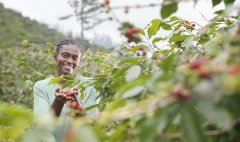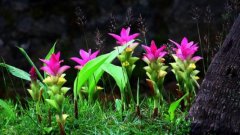Bogota Coffee Tour learn more about Colombian Coffee
Colombia is three times the size of Japan
Capital: Bogotá
Language: Spanish
per capita
GDP: 480,000 yen <4.2 million yen in Japan>
Bogotá, the capital city at an altitude of 2600m
One third of Colombia's territory is mountainous.
As an equatorial country, coffee is produced in mountainous areas at higher altitudes. Bogotá's hardships can be felt even more when climbing stairs at an altitude of 2600m.
Colombia's coffee is mostly produced by small-scale farmers, each of whom processes it to a pulp-free state, collects it, refines it, and exports it abroad. In recent years, Colombia coffee has focused on yield after Brazil, under the guidance of FNC
About 70% of Colombia coffee is Variedad Colombia, a high-yield and disease-resistant variety, but a hybrid of Arabica and Robusta. Although there is also delicious coffee, but compared to pure Arabica quality is still slightly inferior.
This coffee has been developed for 20 years and has begun to be infected with rust.
Thus a hybrid of Variedad Colombia and Robusta, Castillo, has been developed.
I shared "Castillo" locally, but when it comes to taste. I really can't drink this cup of coffee.
What happened to the delicious Colombia coffee that was once praised as mild Colombia.
Coffee is a crop. Depending on the producer's consciousness and the soil, there can be considerable differences.
The larger of the coffee farms I visited were planted with a variety of varieties, modern agricultural methods and a sense of professionalism and reliability in the coffee business. This includes Variedad Colombia.
The finest Colombia coffee is grown in small villages in Bojaca County, less than a few hours 'drive from Bogotá. There are more than 100 small and medium-sized farmers in this village. A few farmhouses scattered on a hill, previously confined to planting "Tipica", a small amount of continuous production. The greatest charm of Tipica is the greatest charm of coffee, which is where its superior aroma and sweetness are combined. These farmhouse coffee trees are passed down from generation to generation, and when the old trees dry up, the coffee cherries naturally fall and grow into new coffee trees, which is really "laissez-faire cultivation."
In addition, most farmers are poor and cannot afford fertilizers and pesticides. Use only home-grown organic fertilizer.
The coffee trees, which had to be grown in a "completely organic environment," were stably cultivated in the excellent soil of the village.

Important Notice :
前街咖啡 FrontStreet Coffee has moved to new addredd:
FrontStreet Coffee Address: 315,Donghua East Road,GuangZhou
Tel:020 38364473
- Prev

Introduction to the flavor of coffee in Akulu Pakuarya Farrance Farm
Although Colombia, the second largest producer of coffee in the world, is far inferior to Brazil in terms of quantity, it is superior in quality. Colombia produces the most washed Arabica coffee in the world. The coffee tastes soft and sweet, and it is properly handled with a hint of cocoa. Aku Road Pakua, southwest of Medellin, Antioquia, Colombia
- Next

Colombian Coffee anecdotes Coffee time the influence of Coffee in Colombia
The history of coffee cultivation in Colombia can be traced back to the Spanish colonial era in the 16th century. It is said to have come from the island of Haiti in the Caribbean and by sea through El Salvador in Central America. Like other Latin American countries, the main variety of coffee in Colombia is Arabica coffee (coffea arabica), that is, small fruit coffee, which is larger than big fruit coffee (coffea robusta).
Related
- Does Rose Summer choose Blue, Green or Red? Detailed explanation of Rose Summer Coffee plots and Classification in Panamanian Jade Manor
- What is the difference between the origin, producing area, processing plant, cooperative and manor of coffee beans?
- How fine does the espresso powder fit? how to grind the espresso?
- Sca coffee roasting degree color card coffee roasting degree 8 roasting color values what do you mean?
- The practice of lattes: how to make lattes at home
- Introduction to Indonesian Fine Coffee beans-- Java Coffee producing area of Indonesian Arabica Coffee
- How much will the flavor of light and medium roasted rose summer be expressed? What baking level is rose summer suitable for?
- Introduction to the characteristics of washing, sun-drying or wet-planing coffee commonly used in Mantenin, Indonesia
- Price characteristics of Arabica Coffee Bean Starbucks introduction to Manning Coffee Bean Taste producing area Variety Manor
- What is the authentic Yega flavor? What are the flavor characteristics of the really excellent Yejasuffi coffee beans?

